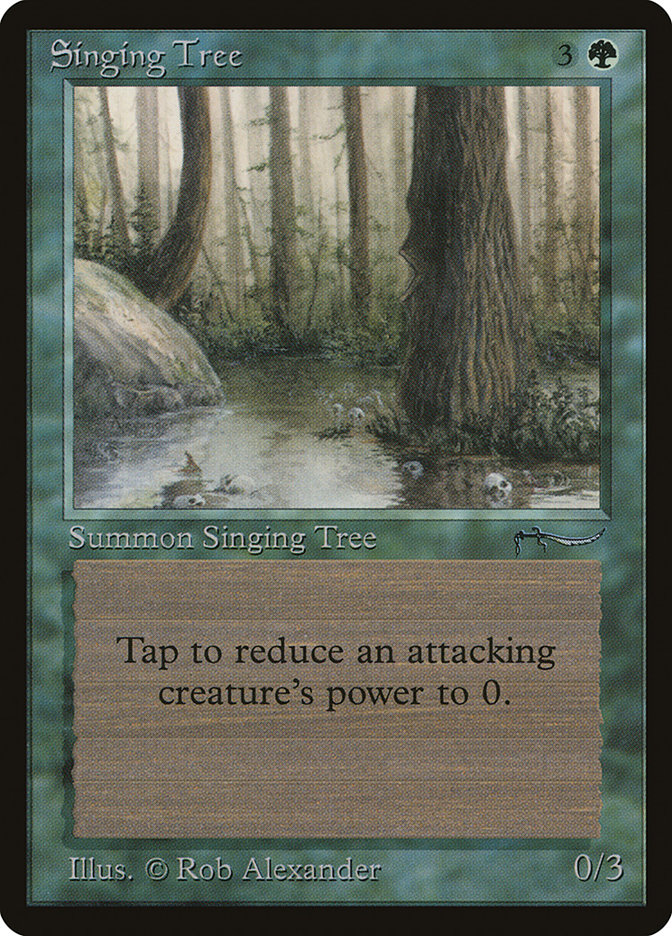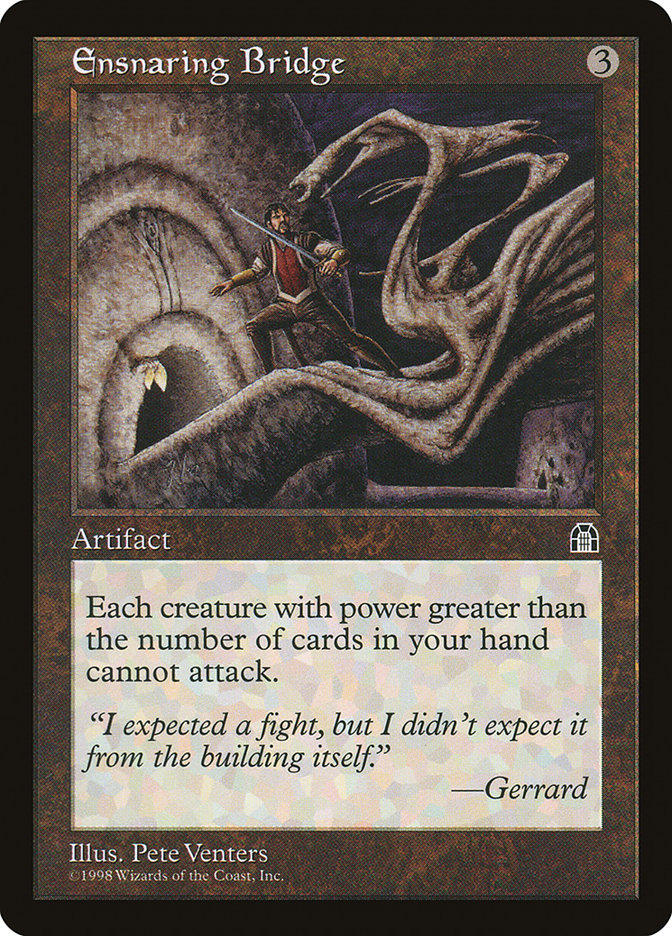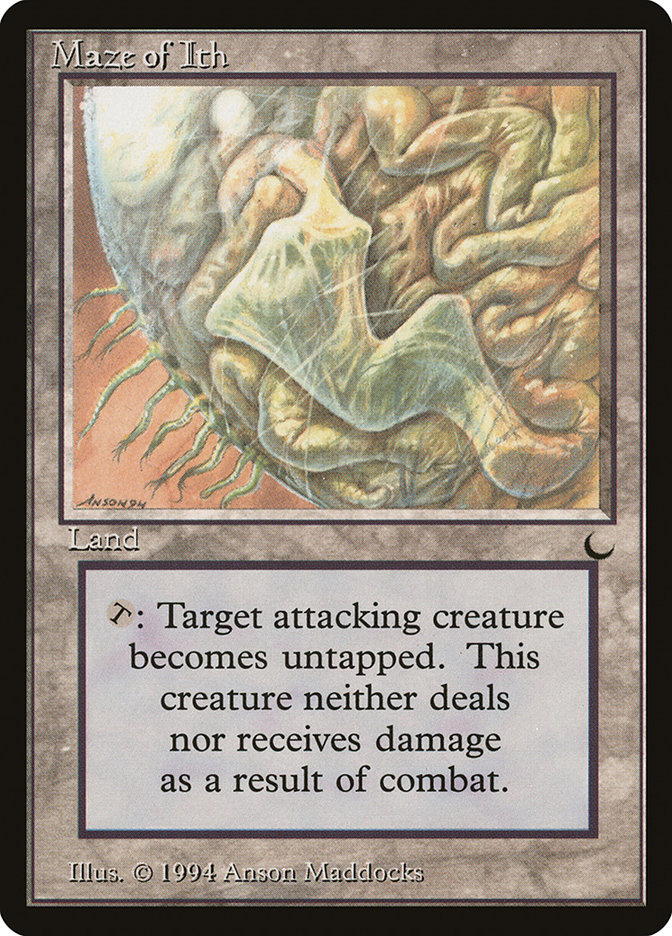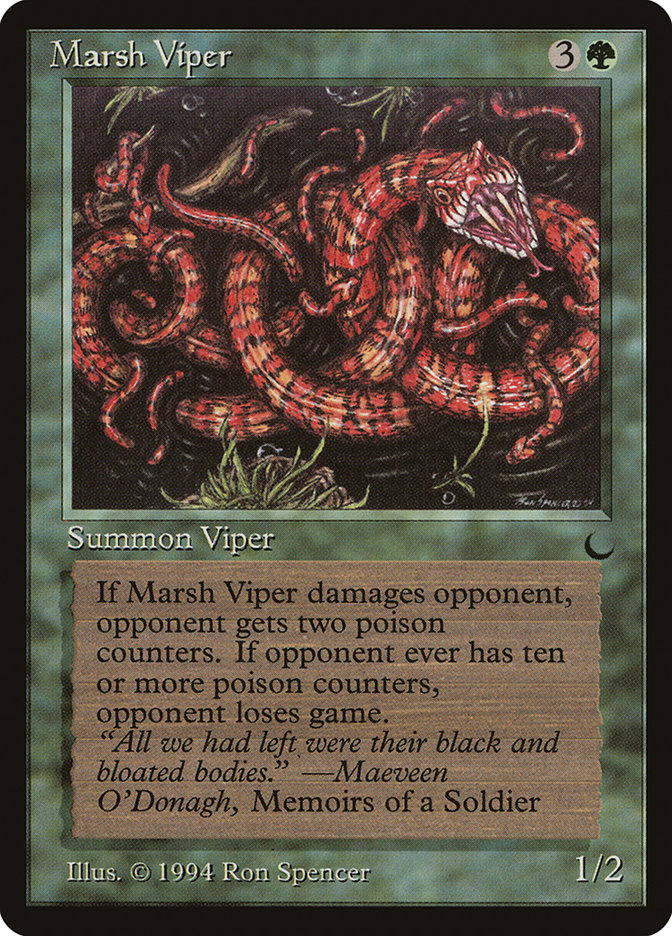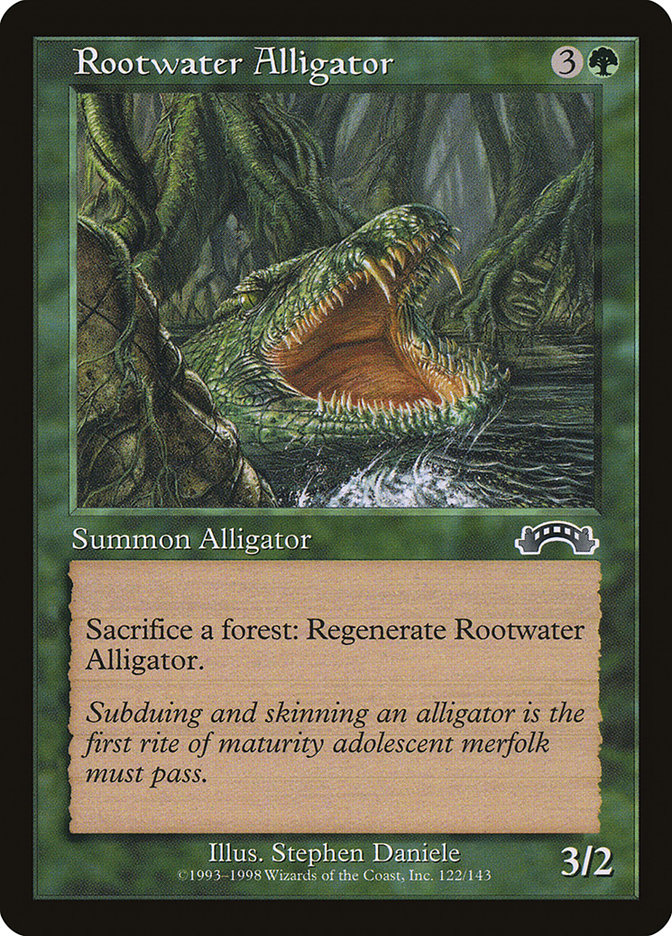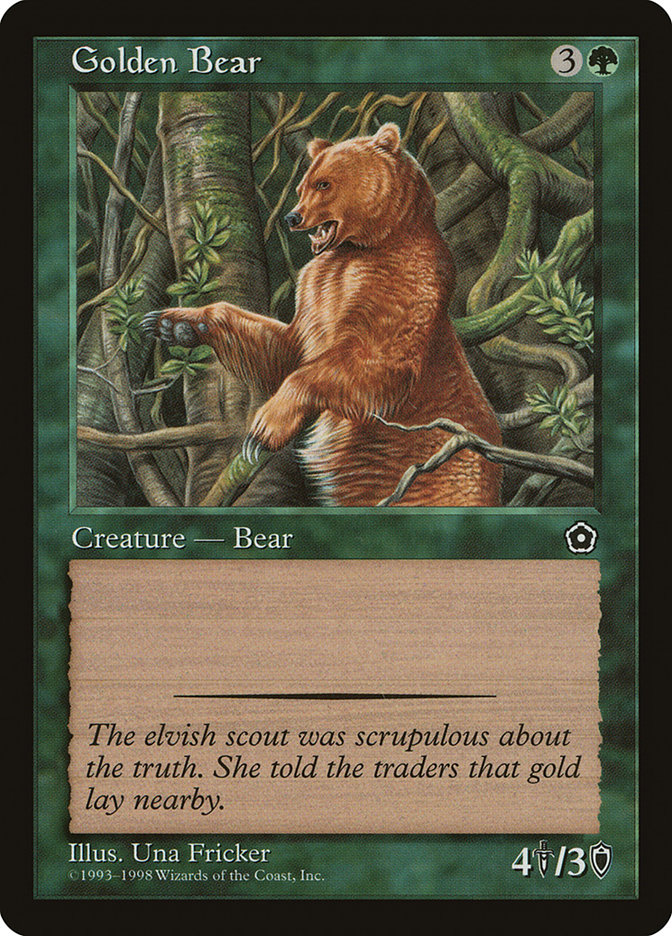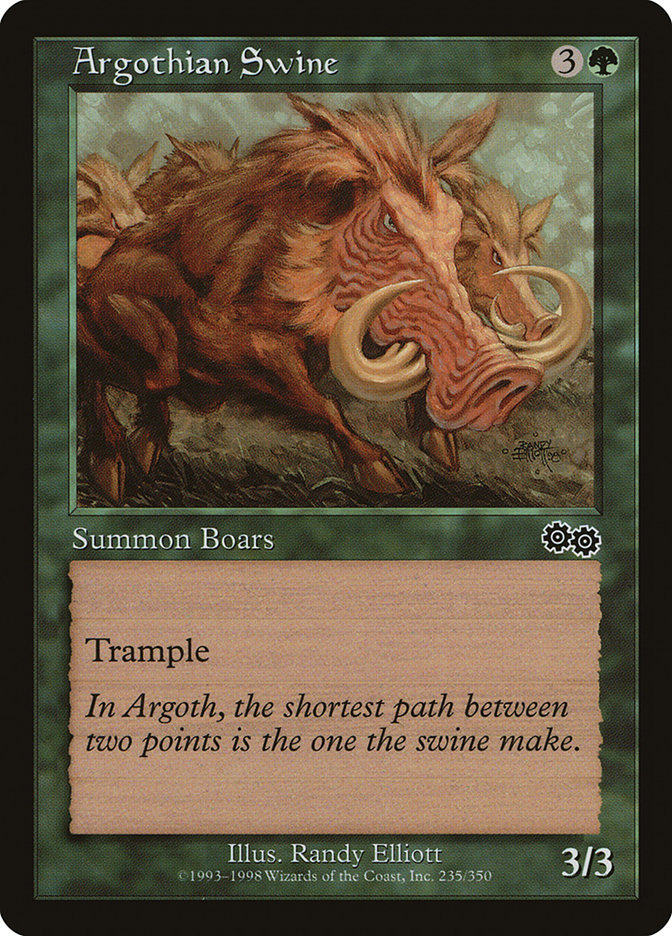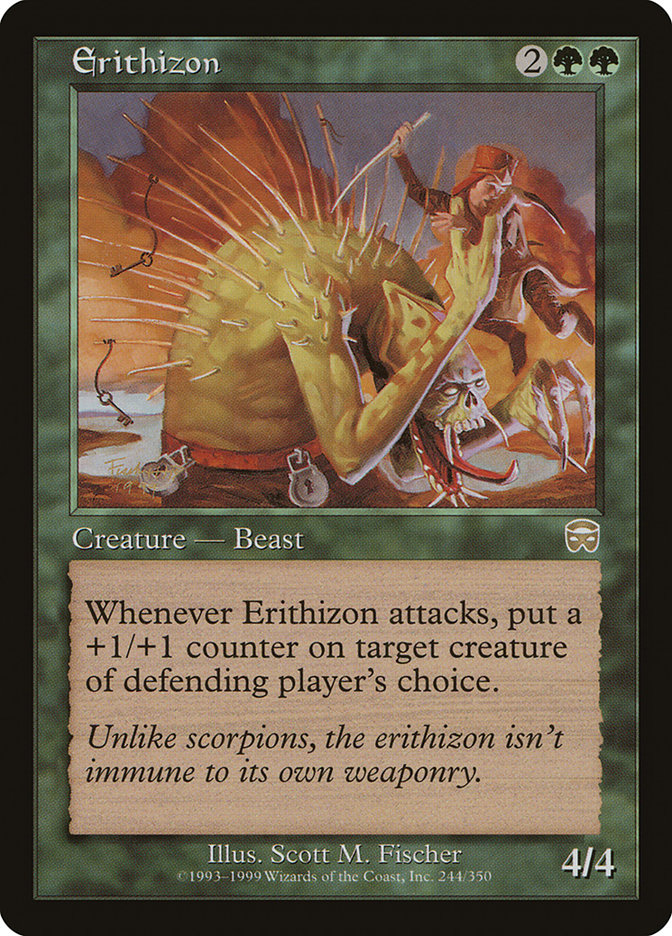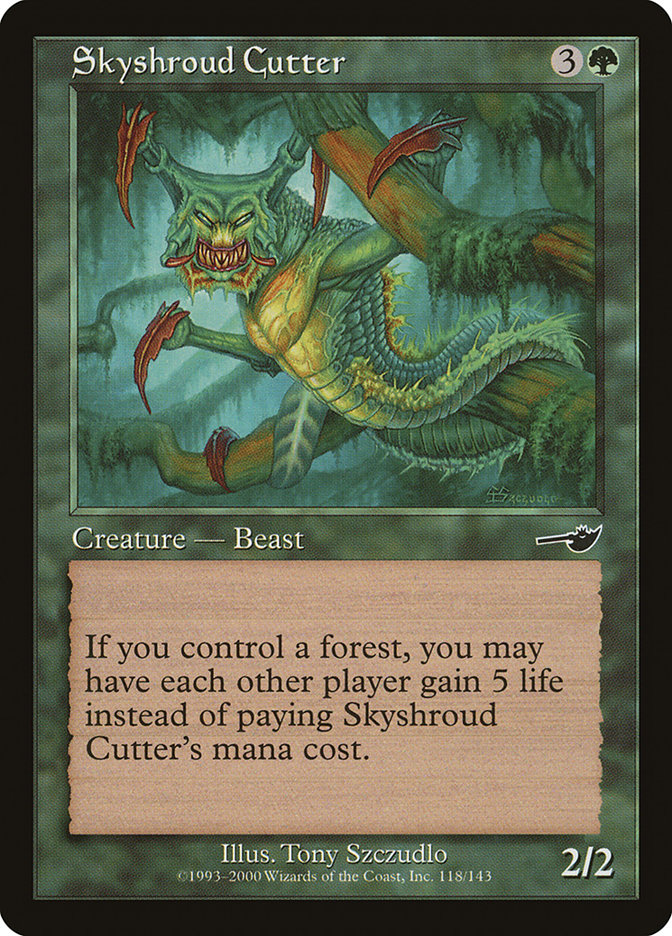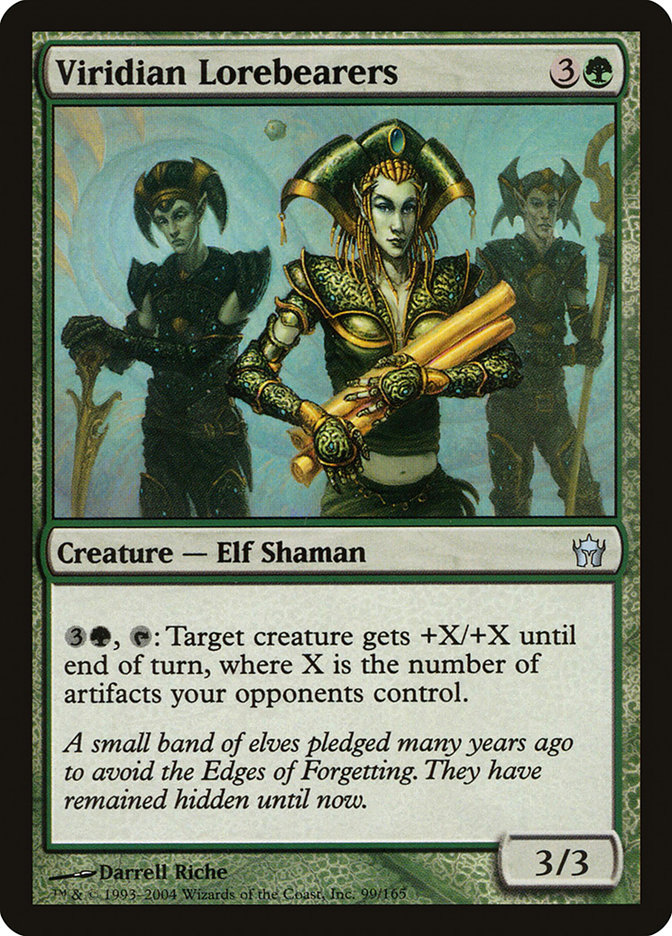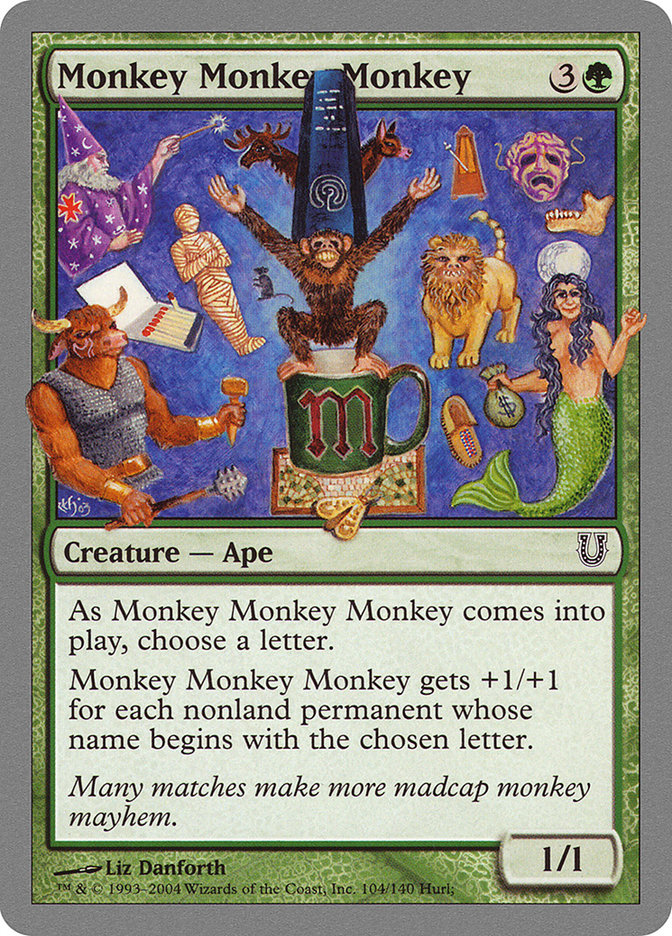Singing Tree Carta MTG
| Colecciones da carta | Lanzado en 2 coleccionesVer todos |
| El coste de maná | |
| Costo de maná convertido | 4 |
| Rareza | Extraña |
| Tipo | Creature — Plant |
| Fuerza | 0 |
| Tenacidad | 3 |
Texto de la carta
Toca para reducir el poder de una criatura atacante a 0.
Cartas Similares
El Árbol Cantor de la expansión Arabian Nights ocupa un lugar único en la historia de Magic: The Gathering. Su habilidad para ajustar el poder de una criatura atacante resuena con habilidades vistas en cartas como Ensnaring Bridge. Ensnaring Bridge restringe a los atacantes basándose en el número de cartas en la mano de un jugador, aprovechando la gestión de tus cartas para estrategias defensivas. Mientras que el Árbol Cantor también afecta al combate, su enfoque es singular, aplicándose solo a una criatura y sin el requisito del tamaño de la mano.
Entrando en un tema similar de control de criaturas, miramos a Maze of Ith. Esta carta de tierra, en lugar de alterar el poder, simplemente retira a una criatura del combate, mostrando una forma diferente de anular la ofensiva de un oponente. A diferencia del Árbol Cantor que se puede usar repetidamente para debilitar criaturas, Maze of Ith ofrece una resolución completa pero temporal en cada fase de combate.
Cuando se considera la utilidad y el impacto en el campo de batalla, el Árbol Cantor emerge como una carta históricamente significativa, apreciada por su sabor y utilidad. Proporciona a los jugadores un nivel de control sobre el combate que es menos común, resaltando la profundidad de estrategia disponible en Magic: The Gathering.
Cartas similares a Singing Tree por color, tipo y coste de maná
Aspectos positivos de la carta
Ventaja de cartas: Singing Tree permite a los jugadores dictar el ritmo del combate sin gastar cartas adicionales. Al reducir el poder de una criatura atacante, puede eliminar la necesidad de intercambiar criaturas, preservando efectivamente la cantidad de cartas en tu mano y en el campo de batalla.
Aceleración de recursos: Como manipulador de recursos distintivo, Singing Tree puede acelerar indirectamente tus recursos al ayudar a mantener una presencia estable en el tablero, lo que te permite dedicar mana a otros hechizos y desarrollos estratégicos sin preocuparte por ataques agresivos.
Velocidad instantánea: Aunque no es un instantáneo en sí mismo, Singing Tree puede impactar el juego a una velocidad similar. Su capacidad para ajustar el poder de las criaturas durante el paso de declarar atacantes imita la flexibilidad de las interacciones a velocidad instantánea, brindando a los jugadores una herramienta dinámica para sorpresas de combate y bloques estratégicos.
Aspectos negativos de la carta
Requisito de descarte: En el ámbito de la gestión táctica de recursos, tener que descartar una carta podría dejarte en desventaja, luchando por mantener una mano fuerte a lo largo del juego. Esto puede ser especialmente perjudicial en las etapas finales cuando el impacto de cada carta es crítico.
Costo de mana específico: Diseñado para encajar en un nicho dentro de ensamblajes de mana específicos, la carta Singing Tree puede no integrarse fácilmente en cada mazo. Requiere mana verde, que aunque es abundante en mazos con temática natural, podría no estar tan disponible en construcciones multicolores o fuera de tema.
Costo de mana comparativamente alto: Con un costo de lanzamiento que puede considerarse elevado dada la evolución de criaturas y habilidades poderosas, la carta Singing Tree plantea una decisión estratégica. Los jugadores deben sopesar su costo frente a otras jugadas potenciales que podrían ya sea mejorar su presencia en el tablero o interrumpir de manera más efectiva las estrategias de sus oponentes.
Motivos para incluir en tu colección
Versatilidad: La carta Singing Tree aporta una dinámica única a la construcción de mazos, permitiendo estrategias defensivas diversas. Su capacidad para ajustar el poder de criaturas atacantes la convierte en una adición valiosa a cualquier colección que priorice la adaptabilidad y el control del tablero.
Potencial de combo: Singing Tree puede ser una pieza clave en combinaciones que implican modificar estadísticas de criaturas, actuando esencialmente como un multiplicador de fuerzas dentro de mazos de sinergia basados en criaturas. Al combinarlo con cartas que se benefician de la reducción del poder de las criaturas, desbloqueas nuevos niveles de interacción y potencial.
Meta-relevancia: En entornos de juego donde las criaturas agresivas dominan, Singing Tree destaca al reducir su poder, potencialmente interrumpiendo el tempo del oponente. Esta relevancia en el meta significa que puede ser una poderosa carta de banquillo para ajustar tu estrategia contra amenazas comunes.
Cómo vencer a Singing Tree
Superar las peculiaridades de la carta Singing Tree puede ser un desafío estratégico para muchos jugadores. Esta carta clásica de la serie Arabian Nights de Magic: The Gathering puede disminuir incluso el ataque de las criaturas más poderosas, haciendo que una estrategia agresiva parezca inútil. A diferencia de los hechizos de daño más comunes o trucos de combate, Singing Tree ajusta el poder de ataque de una criatura, lo que puede ser una molestia persistente a lo largo del juego.
Sin embargo, la influencia del árbol no es insuperable. Una táctica efectiva es utilizar hechizos de eliminación que apunten a encantamientos o tierras, como Naturalize o Ghost Quarter, para arrancarlo completamente del campo de batalla. Además, depender de habilidades que no dependen del poder de ataque, como las que se encuentran en cartas con daño de impacto o drenaje de vida, anula el efecto del árbol. Alternativamente, involucrar al Singing Tree en combate con una criatura que posea un mecanismo de "debe ser bloqueado" puede eliminarlo rápidamente.
En esencia, con las cartas adecuadas y un enfoque bien pensado, vencer a Singing Tree se convierte en una tarea manejable. Ajustar tu plan de juego para incorporar fuentes de eliminación o daños indirectos es clave para superar este obstáculo arbóreo y reclamar la victoria.
Donde comprar
Si estás buscando comprar una carta MTG Singing Tree de un coleccione específico como Arabian Nights and Masters Edition, existen varias opciones confiables que debes considerar. Una de las fuentes principales es tu tienda de juegos local, donde a menudo puedes encontrar paquetes de refuerzo, cartas individuales y mazos preconstruidos de colecciones actuales y pasadas. A menudo ofrecen el beneficio adicional de una comunidad donde puedes intercambiar con otros jugadores.
Para un inventario más amplio, particularmente de colecciones más antiguos, mercados en línea como TCGPlayer, Card Kingdom y Card Market ofrecen amplias selecciones y te permiten buscar cartas de colecciones específicos. Las plataformas de comercio electrónico más grandes como eBay y Amazon también tienen listados de varios vendedores, lo que puede ser un buen lugar para buscar productos sellados y hallazgos raros.
Además, el sitio oficial de Magic suele tener un localizador de tiendas y listas de minoristas para encontrar Wizards of the Productos con licencia costera. Recuerde comprobar la autenticidad y el estado de las cartas al comprarlas, especialmente a vendedores individuales en mercados más grandes.
A continuación se muestra una lista de algunos sitios web de tiendas donde puede comprar las Singing Tree y otras cartas MTG:
 COMPRAR
COMPRAR BurnMana es un socio oficial de TCGPlayer
- eBay
- Card Kingdom
- Card Market
- Star City Games
- CoolStuffInc
- MTG Mint Card
- Hareruya
- Troll and Toad
- ABU Games
- Card Hoarder Magic Online
- MTGO Traders Magic Online
Ver productos MTG
Impresiones
La carta Singing Tree Magic the Gathering se lanzó en 2 colecciones diferentes entre 1993-12-17 y 2007-09-10. Ilustrado por Rob Alexander.
| # | Liberado | Nombre | Código | Símbolo | Número | Marco | Disposición | Borde | Artista |
|---|---|---|---|---|---|---|---|---|---|
| 1 | 1993-12-17 | Arabian Nights | ARN | 54 | 1993 | Normal | Negra | Rob Alexander | |
| 2 | 2007-09-10 | Masters Edition | ME1 | 130 | 1997 | Normal | Negra | Rob Alexander |
Legalidades
Formatos de Magic the Gathering donde Singing Tree tiene restricciones
| Formato | Legalidad |
|---|---|
| Oldschool | Legal |
| Commander | Legal |
| Legacy | Legal |
| Paupercommander | Restringido |
| Oathbreaker | Legal |
| Vintage | Legal |
| Duel | Legal |
| Predh | Legal |
Reglas e información
La guía de referencia para las reglas de las cartas Singing Tree de Magic: The Gathering proporciona las reglas oficiales, las erratas emitidas, así como un registro de todas las modificaciones funcionales que se han producido.
| Fecha | Texto |
|---|---|
| 01/11/2005 | Cambiará el poder actual de la criatura a cero (en lugar de darle -X/-0, como antes) pero no evitará aumentarlo después de que el Árbol haya sido usado en él. |
| 01/10/2009 | Aplicas efectos de cambio de poder/resistencia en una serie de subcapas en el siguiente orden: (a) efectos de habilidades definitorias de características; (b) efectos que establecen el poder y/o resistencia en un número o valor específico; (c) efectos que modifican el poder y/o resistencia pero no establecen el poder y/o resistencia en un número o valor específico; (d) cambios de contadores; (e) efectos que intercambian el poder y la resistencia de una criatura. El efecto de esta carta siempre se aplica en (b), lo que significa que los efectos aplicados en la subcapa (c), (d) o (e) no serán sobrescritos; se aplicarán al nuevo valor. |
